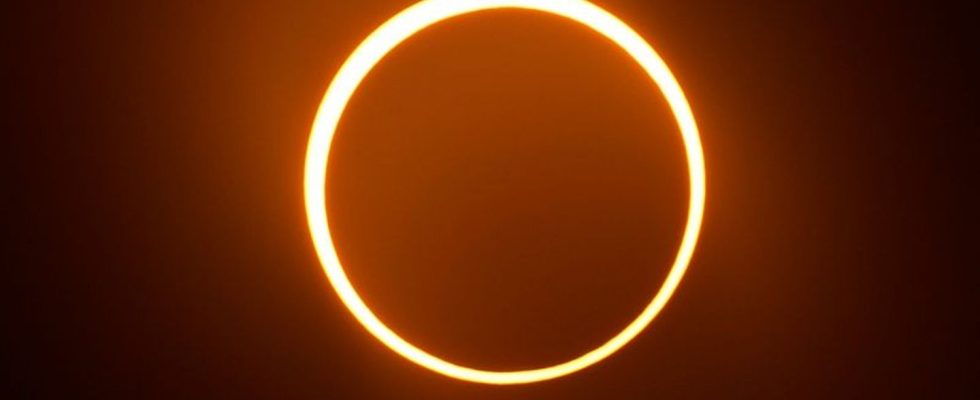astronomy
People in America admire ring solar eclipse
The wreath of fire solar eclipse in the sky over San Antonio, Texas. photo
© Eric Gay/AP
People see a short but impressive celestial spectacle over parts of the American continent. The moon moves in front of the sun – with a very special effect.
Millions of people in parts of North, South and Central America has admired a rare wreath of fire solar eclipse. Equipped with special protective goggles, they came together in many places, for example in Albuquerque in the US state of New Mexico, to watch the natural spectacle together.
During a wreath of fire solar eclipse, also known as an annular solar eclipse, the moon moves in front of the sun, but the outer edge of our home star remains visible. According to the US space agency NASA, the solar eclipse was most pronounced in parts of the US states Oregon, Nevada, Utah, Arizona, New Mexico and Texas as well as in parts of Mexico, Belize, Honduras, Nicaragua, Costa Rica, Panama and Colombia and Brazil.
The visibility of the annular solar eclipse moved in a narrow strip from northwest to southeast across the American continent. The maximum duration of the annular phase of five minutes and 17 seconds was reached over Panama. Partial phases of darkness could be seen over large areas of the USA, although rain clouds prevented a view of the celestial spectacle on parts of the US East Coast, for example. The phenomenon was unobservable throughout Europe.
An annular solar eclipse occurs when the moon moves centrally in front of the sun, but is at a comparatively large distance from the earth at this moment. This means that the Earth’s satellite does not completely cover the sun’s disk. A total solar eclipse has been announced again for parts of North America in April 2024.

